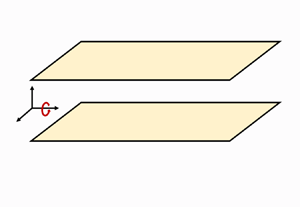Published online by Cambridge University Press: 06 April 2022

Helicity is a quadratic inviscid conservative quantity in three-dimensional turbulent flows and is crucial for turbulent system evolution. Helicity effects have mainly been highlighted over the past few decades to explore the intrinsic mechanism of turbulent flows, while the statistical characteristics of helicity itself are nearly absent in general anisotropic turbulent flows. In this paper, we investigate the helicity statistics in turbulent channel flows with streamwise rotation at moderate rotation numbers ( $Ro_{\tau }=7.5,15$ and 30) and Reynolds numbers (
$Ro_{\tau }=7.5,15$ and 30) and Reynolds numbers ( $Re_{\tau }=180$ and 395), including their spatial and scale distributions, anisotropy and cross-scale transfer. The appearance of a mean secondary flow in the spanwise direction corresponds to a mean streamwise vorticity, which indicates the presence of a high-helicity distribution. Numerical results reveal a regular helicity profile along the wall-normal direction, and a new peak is found in the near-wall region around
$Re_{\tau }=180$ and 395), including their spatial and scale distributions, anisotropy and cross-scale transfer. The appearance of a mean secondary flow in the spanwise direction corresponds to a mean streamwise vorticity, which indicates the presence of a high-helicity distribution. Numerical results reveal a regular helicity profile along the wall-normal direction, and a new peak is found in the near-wall region around  $y^+=6$ of the streamwise or spanwise helicity profiles. The inter-scale helicity transfer is analysed by the filtering method, and the numerical consequences reveal that the second channel of the helicity cascade we proposed previously is dominant in contrast to the first channel. The rotation effects are explored by comparing the numerical results obtained under different rotation numbers. With increasing rotation number, more helical structures in the near-wall regions are present, with peaks of helicity profiles and fluxes coming closer to the wall. With a higher Reynolds number, their amplitudes are larger and scale-space transfer is strengthened. These systematic numerical analyses uncover the helicity distributions and transfer in wall-bounded turbulent flows.
$y^+=6$ of the streamwise or spanwise helicity profiles. The inter-scale helicity transfer is analysed by the filtering method, and the numerical consequences reveal that the second channel of the helicity cascade we proposed previously is dominant in contrast to the first channel. The rotation effects are explored by comparing the numerical results obtained under different rotation numbers. With increasing rotation number, more helical structures in the near-wall regions are present, with peaks of helicity profiles and fluxes coming closer to the wall. With a higher Reynolds number, their amplitudes are larger and scale-space transfer is strengthened. These systematic numerical analyses uncover the helicity distributions and transfer in wall-bounded turbulent flows.